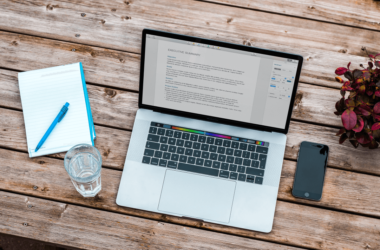Table of Contents Show
Are you struggling to stay focused and productive? In today’s fast-paced world, maintaining concentration can be a challenge. But fear not, because we have the solution! In this blog post, we will share five powerful focus techniques that will help skyrocket your productivity.
From the famous Pomodoro Technique to mindfulness meditation and eliminating distractions, these methods are tried and tested ways to enhance your ability to concentrate. Get ready to unlock your full potential and get things done like never before!
1. Pomodoro Technique
Pomodoro technique is one of the best ways to help develop focus while working. This method is ranked top on our list of the best focus techniques for having increased productivity.
What is the Pomodoro Technique?
The Pomodoro Technique is a time management method that helps improve focus and productivity. It involves breaking your work into short, focused intervals called “Pomodoros”.
During each Pomodoro, you concentrate on a single task without any distractions, allowing your mind to fully engage in the activity. This technique promotes concentration and prevents burnout by incorporating regular breaks for rest or exercise.
How to use the Pomodoro Technique?
To effectively use the Pomodoro Technique, start by setting a timer for 25 minutes and focus solely on one task during this time. Avoid distractions and maintain full concentration to maximize productivity.
After each 25-minute session, take a short break of 5 minutes to rest your mind before starting the next cycle. Repeat this process three more times, then take a longer break of around 15-30 minutes to recharge and exercise your body.
Using the Pomodoro Technique helps you lock in your concentration for short bursts of focused work, preventing burnout while maintaining high productivity levels throughout the day.
2. Time Blocking
Time blocking is a powerful technique for increasing productivity. By allocating specific time slots to different tasks or activities, you can enhance focus and manage your time more effectively.
To implement time blocking successfully, start by creating a detailed schedule and prioritizing your most important tasks. Stick to the designated time blocks strictly, avoiding distractions and interruptions as much as possible.
What is Time Blocking?
Time blocking is a productivity technique where you schedule specific blocks of time for focused work on specific tasks or projects. It involves dividing your day into chunks and assigning each chunk to a particular activity, allowing you to prioritize your tasks and eliminate distractions.
Benefits of time blocking:
- Increased focus: By dedicating uninterrupted blocks of time to specific tasks, you can fully concentrate on them without getting distracted by other responsibilities.
- Improved productivity: Time blocking helps you allocate your resources efficiently, ensuring that important tasks receive the attention they deserve.
- Better organization: By planning in advance and mapping out your day, you gain a clearer understanding of what needs to be done and when it should be completed.
- Reduced stress: With a structured approach to managing your time, you can minimize last-minute rushes and avoid feeling overwhelmed by an endless list of unfinished tasks.
How to implement Time Blocking?
Identifying priority tasks is the first step in implementing time blocking. Take a few minutes at the beginning of each day to determine what tasks are most important and align them with your long-term goals.
Creating a schedule is essential for effective time blocking. Allocate specific blocks of time for each task, ensuring that you have designated periods dedicated solely to important activities.
To maximize focus during these scheduled blocks, avoid distractions by turning off notifications on your electronic devices and finding a quiet workspace free from interruptions.
3. Mindfulness Meditation
Mindfulness meditation is a practice that involves focusing one’s attention on the present moment, while calmly acknowledging and accepting one’s thoughts and feelings. By cultivating this awareness without judgment, individuals can develop better concentration, reduce stress levels, and improve overall well-being.
What is Mindfulness Meditation?
The mindfulness focus technique allows you to cultivate self-awareness and focus on what is happening in the here and now. This technique has gained popularity for its numerous benefits, including reducing stress, improving concentration, and enhancing overall well-being.
Incorporating mindfulness meditation into your daily routine can have transformative effects on your mental state and productivity levels. Here are some key aspects of this powerful focus technique:
- Focus on the present moment
- Cultivate self-awareness
- Practice non-judgmental observation
- Enhance concentration
- Reduce stress
By engaging in mindfulness meditation, you can unlock new levels of clarity and productivity in all areas of your life.
Techniques for Practicing Mindfulness Meditation
One technique for practicing mindfulness meditation is focused breathing. This involves bringing your attention to the sensations of each breath, noticing the inhales and exhales without judgment or attachment.
Another technique is body scan meditation, where you systematically bring awareness to different parts of your body, observing any physical sensations or areas of tension. Both techniques can help increase focus and cultivate a state of present-moment awareness.
4. Eliminating Distractions
Identifying common distractions is the first step toward eliminating them. Take note of external factors such as noise, phone notifications, and interruptions from colleagues. Internal distractions like negative thoughts or multitasking should also be recognized and addressed.
Identifying common distractions
Identifying common distractions is crucial for improving focus and productivity. One common distraction is digital notifications, such as social media updates or email alerts. These interruptions can disrupt workflow and divert attention away from the task at hand.
Another common distraction is multitasking, which can lead to decreased efficiency and lower quality of work. By recognizing these distractions, individuals can take steps to minimize their impact on focus and optimize their productivity.
Another prevalent distraction is environmental noise. Whether it’s a noisy office or loud neighbors, external sounds can easily grab our attention and hinder concentration. Moreover, procrastination poses a major challenge to maintaining focus. Engaging in unrelated activities or delaying tasks not only consumes valuable time but also contributes to mental clutter that makes it difficult to concentrate when needed most.
Strategies for minimizing distractions
Strategies for minimizing distractions:
- Create a dedicated workspace free from noise and interruptions.
- Set specific time blocks for focused work and eliminate all non-essential tasks during those periods.
5. Single-Tasking
Single-tasking, a powerful focus technique, has been proven to improve concentration and productivity by allowing you to devote your full attention to one task at a time. By eliminating distractions and multitasking, you can achieve higher levels of efficiency and quality in your work.
How does single-tasking improve focus?
Reduced distractions allow the mind to fully concentrate on one task at a time, eliminating the overwhelming jumble of thoughts and information vying for attention. This streamlined focus enhances concentration, enabling individuals to delve deeper into their work and achieve a state of flow where productivity soars.
With improved efficiency as its byproduct, single-tasking becomes a powerful technique for optimizing focus and accomplishing tasks with greater ease.
Remember, practicing single-tasking requires discipline and commitment. By prioritizing tasks, creating a conducive work environment, and taking regular breaks, you can enhance focus techniques for increased productivity.
Conclusion
In this blog, we have highlighted some of the best focusing techniques to improve productivity. By minimizing distractions, practicing single-tasking, and creating a dedicated workspace, individuals can enhance their ability to concentrate and achieve higher levels of efficiency in their work.
Remember, it takes discipline and commitment to develop these focus techniques, but the results are well worth the effort. So, start implementing these strategies today and watch your productivity soar!










